Welcome to our blog post on Australian Yorkshire pig facts! In this article, we’ll delve into the fascinating world of Yorkshire pigs, focusing on their origin, size, physical characteristics, and the pros and cons of raising them. These have a rich history, tracing back to the county of Yorkshire in England.
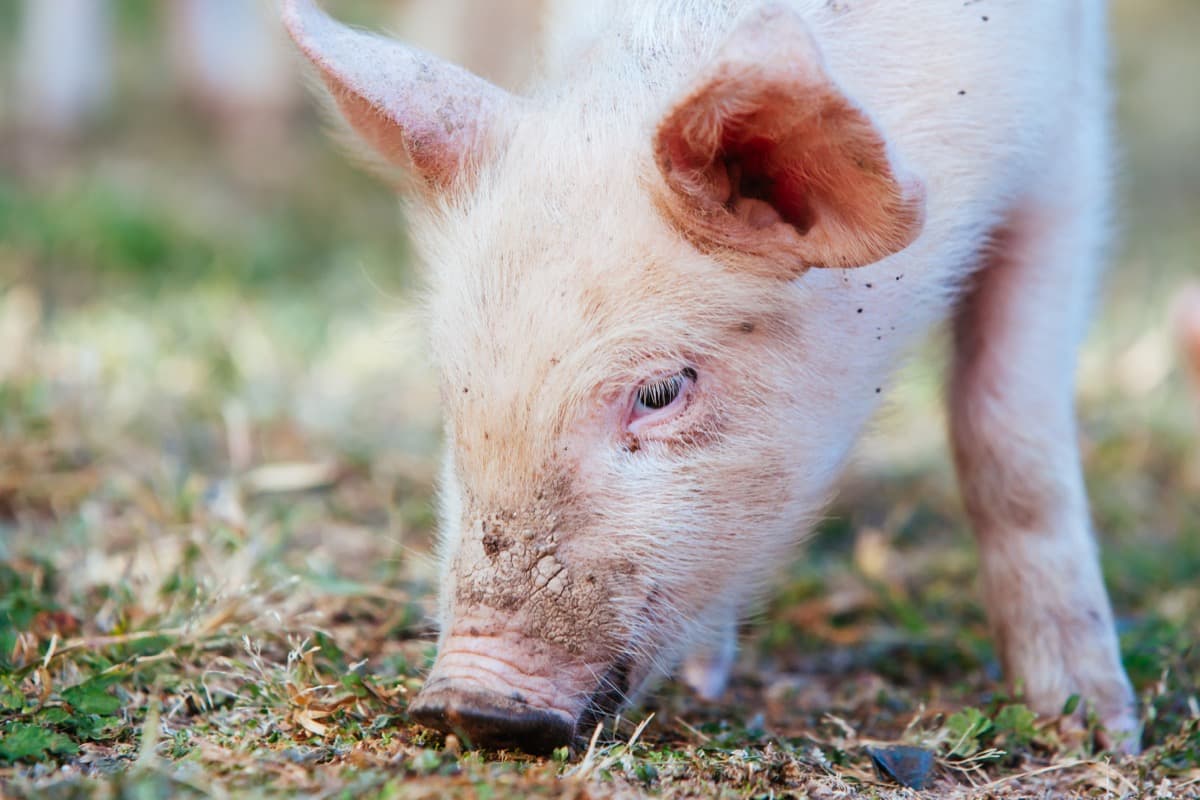
Known for their imposing size, Yorkshire pigs can reach weights of up to 600 pounds (272 kilograms) or more. With their distinctive white color, erect ears, and strong build, they possess an undeniable charm. So, whether you’re considering adding them to your farm or simply curious about these remarkable animals, keep reading to discover all you need about Australian Yorkshire pigs.
Introduction to Australian Yorkshire Pig Facts
The Australian Yorkshire pig, originally derived from the Yorkshire breed in England, has become a widely recognized and popular domestic pig breed in Australia. Renowned for its economic and nutritional benefits, it is prominent in the country’s pig farming industry. Australian Yorkshire pig has significantly impacted the Asian market.
Special modifications have been implemented to meet the specific demands of consumers in this region, ensuring its continued success and marketability. The breed’s adaptability and desirable traits are essential to international and domestic crossbreeding programs. These programs aim to enhance marketable qualities in pigs, such as accelerated growth rates, increased lean meat content, and improved littering ability.
Origin of Australian Yorkshire Pigs
The Australian Yorkshire pig, known as the ‘Australian Large White’ breed, traces its origin back to the Yorkshire breed of pigs from England. It was first introduced to Australia in the late 19th century. Dookie Agricultural College in Victoria played a significant role in breeding the first pedigree Australian Yorkshire pigs. The breed gained popularity, spreading to various regions in Australia. By 1921, it had established a presence in Sydney and expanded further to southern and western Victoria, southern Queensland, and Adelaide by 1931.
In case you missed it: Disease Prevention and Management in Commercial Pig Farms
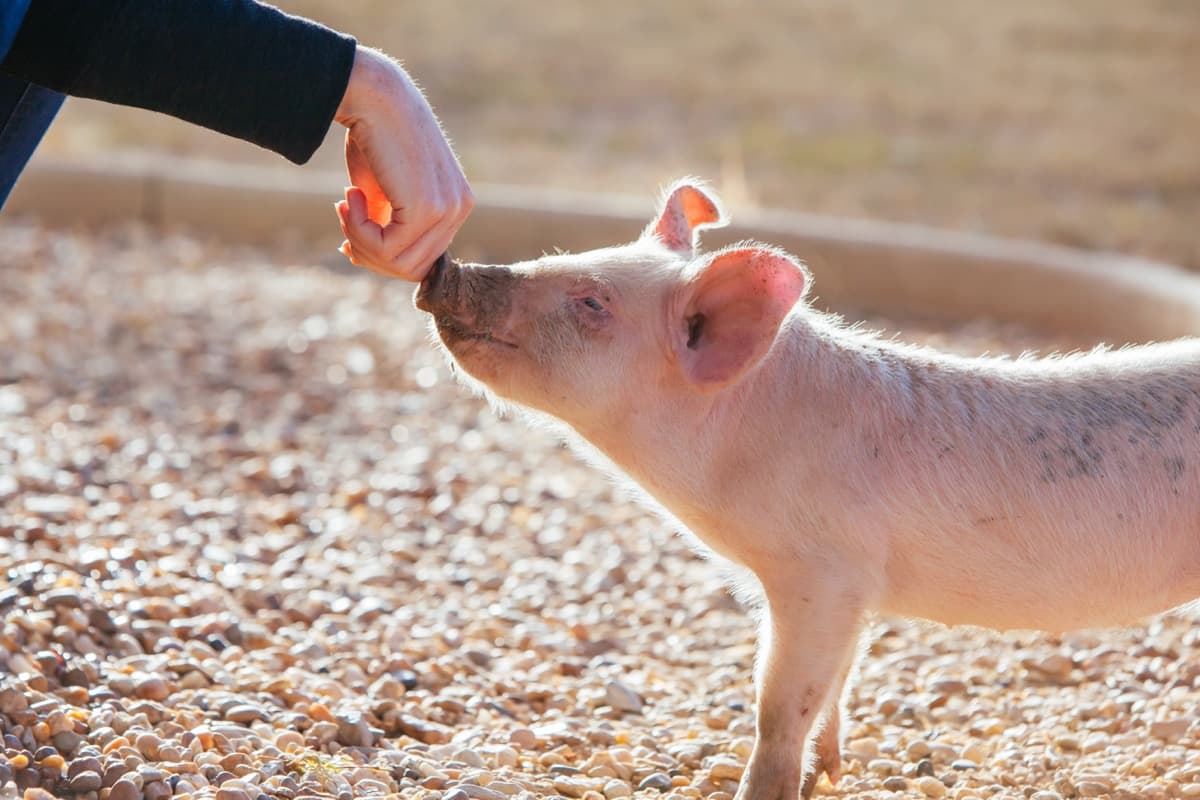
In subsequent years, the breed made its way to southern coastal New South Wales, northern Queensland, Tasmania, and Western Australia by 1941. During the 1950s and 1960s, the Australian Yorkshire pig experienced a surge in popularity, becoming Australia’s most favored pig breed. Its widespread popularity is attributed to the economic advantages it offers and the quality of lean meat it produces.
Size of Australian Yorkshire Pigs
Australian Yorkshire pigs, both males and females can reach impressive weights of up to 650 pounds (295 kilograms). In terms of height, they typically measure between 84 to 92 centimeters. These pigs have a lifespan expectancy of around 6 to 10 years, providing ample time for their growth and development on farms and in agricultural settings.
Unique Features/Facts Related to Australian Yorkshire Pigs
- Other Names: Yorkshire Large White, Large White Pig
- Characteristics: Large and elongated body with a straight back. Erect ears; some individuals may have black areas on the skin. Long snout and body covered in fine hair.
- Personality Traits: Adaptable, intelligent, and tamable.
- Skin Color: White, pinkish, or pink-to-white shades.
- Tail: Short and twisted.
- Uses: Primarily bred for meat production, particularly for bacon. Also popular for lean meat and ham.
- Lifespan/Expectancy: Australian Yorkshire pigs typically live for 6 to 10 years.
- Weight (Size): Both males and females can weigh up to 650 pounds.
- Height: Australian Yorkshire pigs stand at a height of 84 to 92 cm.
- Litter Size: Average litter size is around 13 piglets per sow. Sows of this breed are prolific in terms of reproduction.
- Flock Details: Usually maintained in groups of 8 to 10 pigs.
- Diet: Australian Yorkshire pigs are fed a diverse diet that includes whey powder, fodders, soybeans, barley grains, various other grains, berseem, the stubble of cultivated crops, tree leaves, wheat straw, millets, and maize.
- Country of Origin: Australia (though developed in Yorkshire, England).
- Year of Development: The breed was developed in the 18th century.
In case you missed it: How to Build a Pig Pen for Backyard Farming: A Step-by-Step Guide
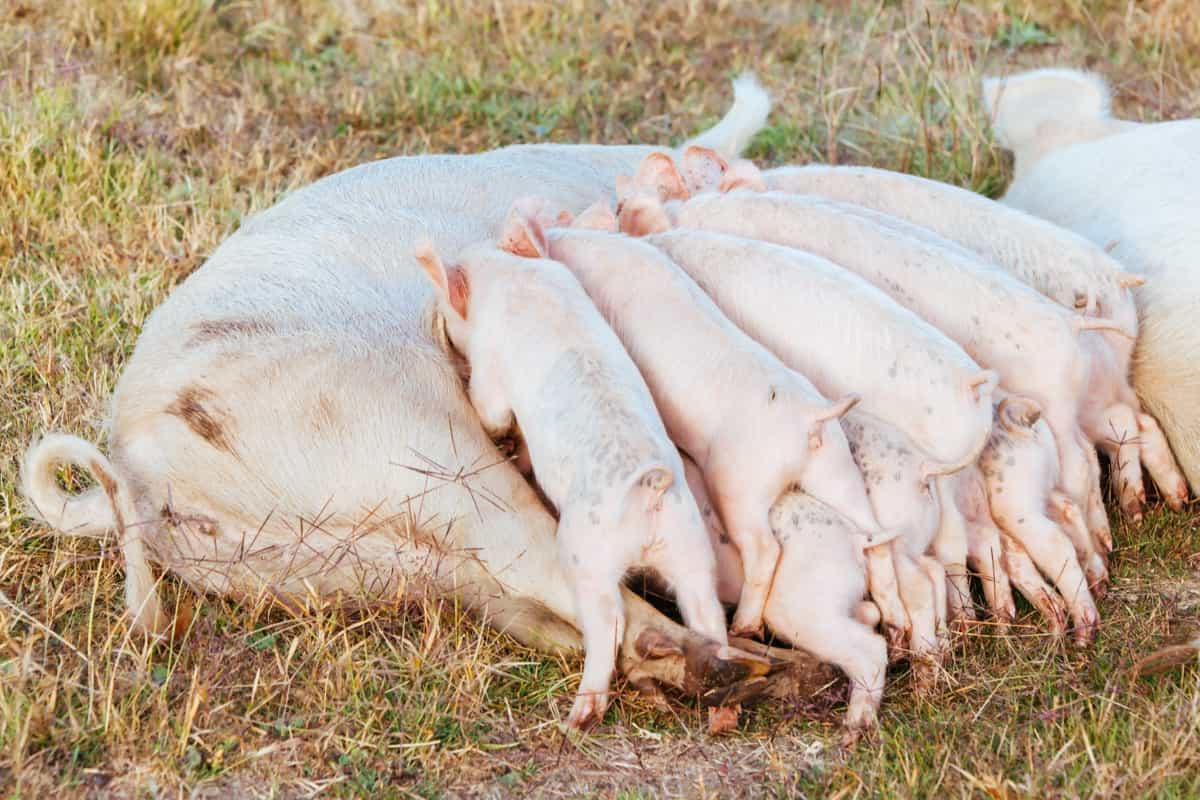
Physical Characteristics of Australian Yorkshire Pigs
Body Structure
- Large-frame breed with a long middle and light shoulders.
- Skin color is white.
- Moderately long head and a slightly dished face.
- Erect ears.
Maturation and Growth
- Australian Yorkshire pigs are late to mature.
- Despite the late maturation, they are the best for growth rate and food efficiency.
Environmental Adaptability and Genetic Advantages
- This breed tolerates a wide range of environments, including tropical climates.
- Optimized litter size and leaner carcass content are genetic advantages.
Energy Efficiency and Stress Resistance
- Australian Yorkshire pigs have been found to utilize the least energy (0.4MJ/day) for everyday maintenance due to minimal physical activity.
- Low energy expenditure allows more energy for growth and enhances resistance to stress from high temperatures and long-distance transport.
Lean Meat Quality and Conversion Rate
- The breed’s advantageous genotypes contribute to leaner meat quality, especially during transportation.
- Australian Yorkshire pigs exhibit a higher conversion rate of feed to meat.
Advantages of Australian Yorkshire Pigs
- Rapid growth for faster production cycles and resource efficiency.
- Excellent feed conversion efficiency for cost savings.
- High-quality lean, and flavorful meat, especially for bacon production.
- Adaptability to various climates, including tropical environments.
- Prolific reproduction with large litter size increases productivity.
- Docile temperament for easy handling and management.
- Crossbreeding potential for desired traits and improved performance.
- Strong market demand for consistent profitability.
Disadvantages of Australian Yorkshire Pigs
- Susceptibility to sunburn due to light skin color.
- Vulnerability to extreme cold, requiring proper care in colder climates.
- Lower fat content may be less suitable for specific traditional or specialty pork products that require higher fat content.
In case you missed it: How to Build a Pig Pen for Backyard Farming: A Step-by-Step Guide
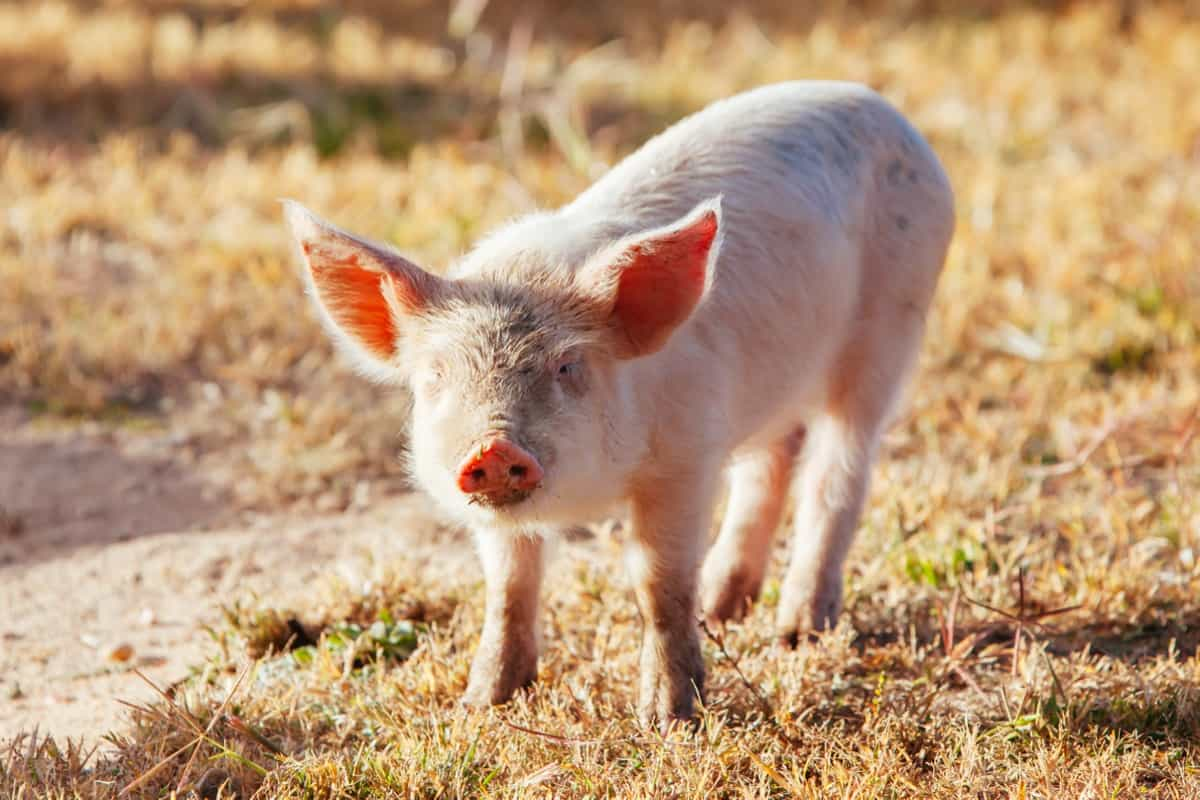
Australian Yorkshire Pig Feeding
Feeding the Australian Yorkshire pig involves a diverse diet that includes whey powder, fodders, soybeans, barley grains, and various other grains like berseem, wheat straw, millets, and maize. These pigs have a good feed conversion ratio, efficiently converting feed into meat.
Their high tolerance for heat and cold also helps reduce production costs associated with climate control. One advantage of this breed is that they require less food than other pigs, allowing farmers to purchase smaller amounts of feed while still achieving the same production level as larger breeds. This contributes to cost savings for farmers while maintaining productivity.
Australian Yorkshire Pig Usage
Australian Yorkshire pigs, also known as Large Whites, have versatile uses in agriculture and farming. They are primarily raised for meat production, particularly for bacon and ham. The breed is known for producing higher-quality and higher-valued meat than other pig breeds, making them a preferred choice for farmers looking to diversify their income streams and increase profitability.
Australian Yorkshires’ large frame and thick fur enable them to adapt well to various climates, including cold environments. In addition to their meat production capabilities, Australian Yorkshire pigs have a friendly and intelligent demeanor, which has led to their popularity as show animals. Furthermore, their even temperament has sometimes made them suitable as pets.
Australian Yorkshire Pig Temperament
The Australian Yorkshire pig is known for its docile and gentle temperament. These pigs exhibit calm and friendly behavior, making them easier to handle and manage in farm settings. Their temperament allows easier interaction with farmers, reducing stress during handling and maintenance activities.
Due to their amiable nature, Australian Yorkshire pigs are less likely to display aggressive or unruly behavior. This docile temperament contributes to a positive working environment and enhances the farming experience. Farmers appreciate their easygoing nature, which promotes better welfare and handling practices, ensuring a harmonious relationship between humans and pigs.
Australian Yorkshire Pig Breeding and Reproduction
- The construction of Artificial Insemination (AI) pig centers in Vietnam, funded by the Australian Centre for International Agricultural Research and the Australian Agency for International Development, has greatly improved breeding practices.
- These centers house Australian Yorkshire boars, which produce high-quality semen with a higher conception rate than local and exotic breeds. Farmers can purchase semen doses from these centers, achieving a conception rate of around 80%. The availability of AI technology has reduced the reliance on natural mating services.
- A comparison of semen characteristics between Australian Yorkshires (AY) and Vietnamese Yorkshires (VY) shows that Australian Yorkshire boars can produce 3-5 more doses per collection, making their semen more cost-effective.
- Australian Yorkshire sows are known for their larger litter size, heavy milk production, and exceptional maternal instincts. Research conducted at the Binh Thang Centre in Vietnam revealed that litters from Australian Yorkshire sows were, on average, about one piglet larger than those from other breeds.
These advantageous littering traits result in economic benefits as fewer sows are required to produce the same number of pigs for slaughter. Using Australian Yorkshire pigs in breeding and reproduction programs has improved productivity and efficiency in pig farming.
In case you missed it: Successful Pig Farm Management and Operational Strategies: A Complete Guide
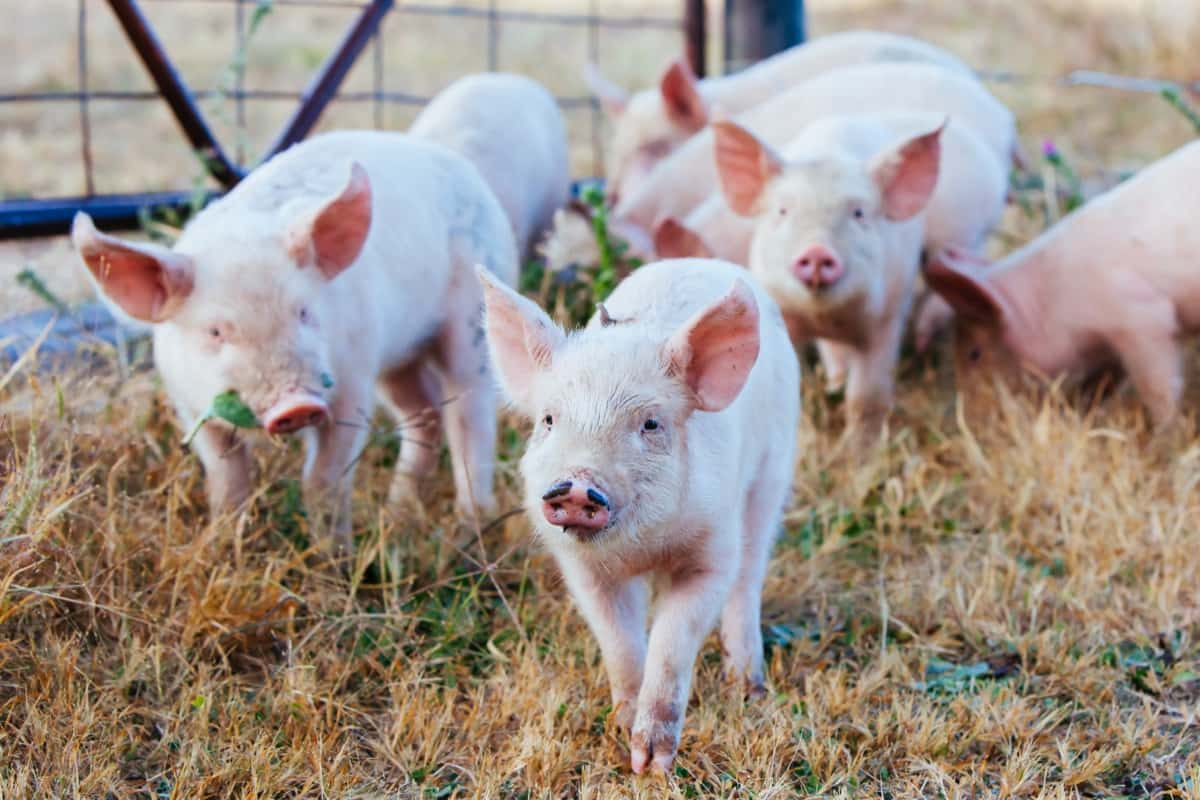
Australian Yorkshire Pig Meat Quality
The Australian Yorkshire pig is highly valued for its meat production, particularly lean meat, and bacon. It falls under large meat breeds and is considered Australia’s most sought-after pork breed. These pigs have a muscular structure that contributes to producing high-quality lean meat with low back fat content. On average, a healthy adult pig weighs around 200 pounds, but they can reach weights of 335-350 pounds at the time of slaughter.
The piglets grow rapidly and are ready for butchering at approximately six months old. To meet consumers’ specific preferences in Singapore, where these pigs are marketed worldwide, modifications have been made to their diet. Instead of whey powder, they are fed with barley grains and soybeans to avoid a milky taste that Singaporeans find less appealing.
Australian Yorkshire Pig Farming Practices
Best practices in Australian Yorkshire pig farming, farmers can ensure the well-being of their pigs, optimize the production efficiency, and promote sustainable and profitable farming operations.
Housing and Facilities
- Provide spacious and well-ventilated housing facilities to ensure the comfort and health of the pigs.
- Use proper flooring materials, such as concrete or slatted floors, for easy cleaning and maintenance.
- Install temperature control systems to regulate the indoor climate, ensuring optimal conditions for the pigs.
Nutrition and Feeding
- Develop a balanced and nutritious diet for the pigs, including a combination of commercial feed and locally sourced ingredients.
- Provide access to clean water at all times to ensure proper hydration.
- Monitor feed intake and adjust rations based on the growth stage and weight of the pigs.
- Incorporate feed additives or supplements as needed to promote pig health and growth.
Health Management
- Implement a comprehensive vaccination program to protect pigs against common diseases and infections.
- Practice strict biosecurity measures to prevent the entry and spread of diseases on the farm.
- Regularly monitor the health of the pigs and promptly isolate and treat any sick animals.
- Maintain cleanliness and hygiene within the pig housing areas to minimize the risk of disease transmission.
In case you missed it: Pietrain Pig Facts: Origin, Size, Physical Characteristics, Pros, and Cons
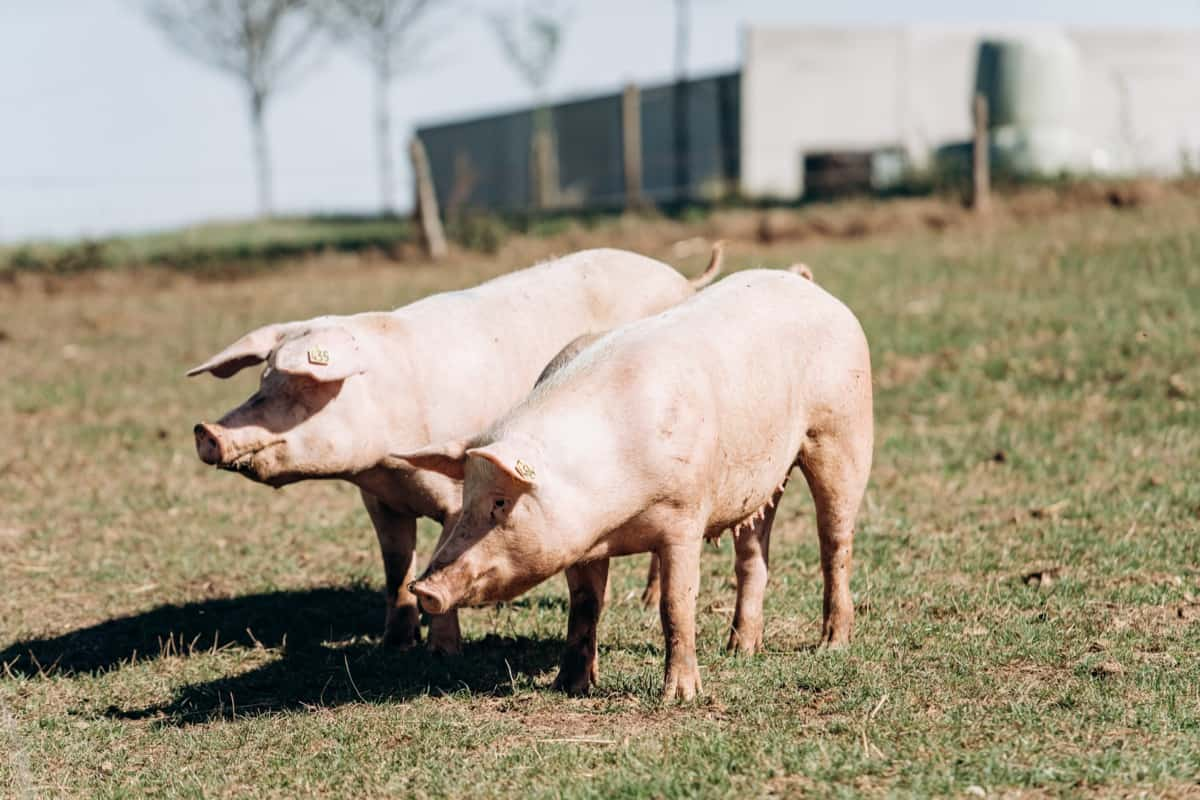
Breeding and Reproduction
- Select genetically superior boars and sows with desirable traits for breeding purposes.
- Implement artificial insemination techniques to optimize breeding success and genetic diversity.
- Maintain accurate breeding records and monitor the reproductive performance of the sows.
- Provide proper care and nutrition to pregnant and lactating sows to ensure the health and vitality of the piglets.
Environmental Management
- Properly manage manure and waste disposal to minimize environmental impact.
- Implement efficient waste management systems, such as composting or biogas generation.
- Utilize sustainable farming practices to reduce the carbon footprint of the pig farm.
Record-Keeping and Monitoring
- Maintain detailed records of pig inventory, health status, breeding performance, and feed consumption.
- Regularly monitor key performance indicators, such as average daily gain and feed conversion ratio.
Australian Yorkshire Pig Farming Profitability
Profitability in Australian Yorkshire Pig Farming is evident due to several factors. Firstly, the leaner meat Australian Yorkshire pigs produce commands a price premium of up to 30% higher than local breeds. This is attributed to the undesirable high-fat content in the meat of local breeds.
Additionally, Australian Yorkshire pigs exhibit superior growth rates and food conversion efficiency compared to local breeds, making them 6-12% more profitable. The combination of higher market prices and improved profitability due to efficient growth and feed conversion makes Australian Yorkshire pig farming a lucrative venture for farmers seeking financial success.
Conclusion
Australian Yorkshire pigs are a popular breed originating from Australia with a large size, distinct physical characteristics, and favorable meat quality. They offer rapid growth, feed efficiency, adaptability, and prolific reproduction but are susceptible to sunburn and have lower fat content.
- Types of Pesticides Used in Agriculture: A Beginner’s Guide
- Economical Aquaculture: A Guide to Low-Budget Fish Farming
- 15 Common Planting Errors That Can Doom Your Fruit Trees
- How to Make Houseplants Bushy: Effective Tips and Ideas
- Innovative Strategies for Boosting Coconut Pollination and Yield
- Pollination Strategies for Maximum Pumpkin Yield
- The Complete Guide to Chicken Fattening: Strategies for Maximum Growth
- Natural Solutions for Tulip Problems: 100% Effective Remedies for Leaf and Bulb-Related Issues
- Revolutionizing Citrus Preservation: Towards a Healthier, Greener Future
- Natural Solutions for Peony Leaf and Flower Problems: 100% Effective Remedies
- Maximizing Profits with Avocado Contract Farming in India: A Comprehensive Guide
- Natural Solutions for Hydrangea Problems: 100% Effective Remedies for Leaf and Flowers
- The Ultimate Guide to Choosing the Perfect Foliage Friend: Bringing Life Indoors
- From Sunlight to Sustainability: 15 Ways to Use Solar Technology in Agriculture
- The Ultimate Guide to Dong Tao Chicken: Exploring from History to Raising
- The Eco-Friendly Makeover: How to Convert Your Unused Swimming Pool into a Fish Pond
- Mastering the Art of Delaware Chicken Farming: Essentials for Healthy Backyard Flocks
- 20 Best Homemade Fertilizers for Money Plant: DIY Recipes and Application Methods
- How to Craft a Comprehensive Free-Range Chicken Farming Business Plan
- Brighten Your Flock: Raising Easter Egger Chickens for Beauty and Bounty
- How to Optimize Your Poultry Egg Farm Business Plan with These Strategies
- Subsidy for Spirulina Cultivation: How Indian Government Schemes Encouraging Spirulina Farmers
- Ultimate Guide to Raising Dominique Chickens: Breeding, Feeding, Egg-Production, and Care
- Mastering the Art of Raising Jersey Giant Chickens: Care, Feeding, and More
- Ultimate Guide to Raising Legbar Chickens: Breeding, Farming Practices, Diet, Egg-Production
- How to Raise Welsummer Chickens: A Comprehensive Guide for Beginners
- How to Protect Indoor Plants in Winter: A Comprehensive Guide
- Ultimate Guide to Grow Bag Gardening: Tips, Tricks, and Planting Ideas for Urban Gardeners
- Guide to Lotus Cultivation: How to Propagate, Plant, Grow, Care, Cost, and Profit
- Agriculture Drone Subsidy Scheme: Government Kisan Subsidy, License, and How to Apply Online
- Ultimate Guide to Raising Araucana Chickens: Breed Profile, Farming Economics, Diet, and Care
- Bringing Hydroponics to Classroom: Importance, Benefits of Learning for School Students
- Ultimate Guide to Raising Polish Chickens: Breed Profile, Farming Economics, Diet, and Care
- Ultimate Guide to Raising Australorp Chickens: Profile, Farming Economics, Egg Production, Diet, and Care
- Silkie Chicken Farming: Raising Practices, Varieties, Egg Production, Diet, and Care
- Sussex Chicken Farming: Raising Practices, Varieties, Egg Production, Diet and Care